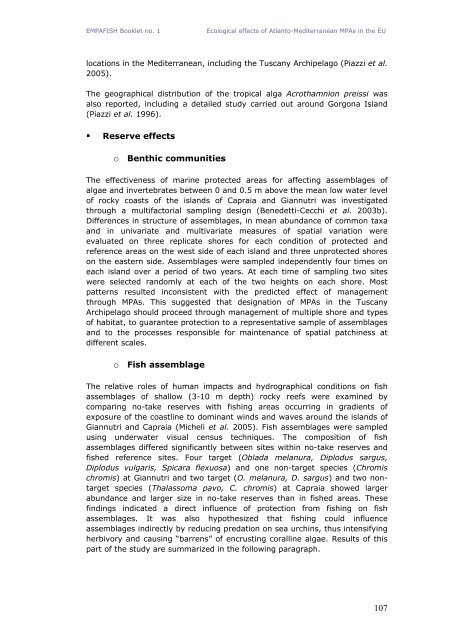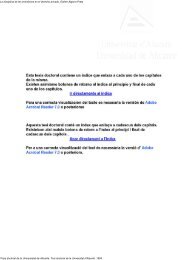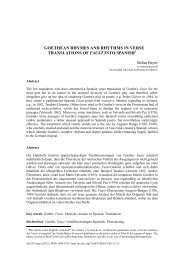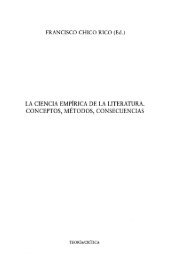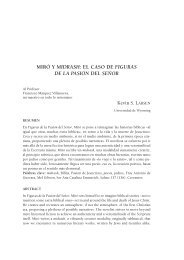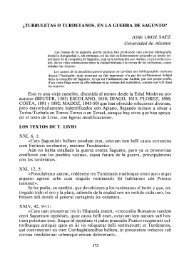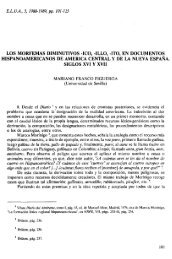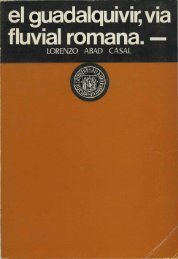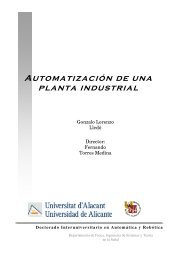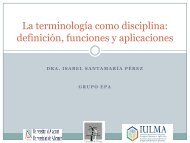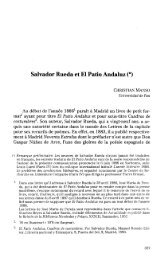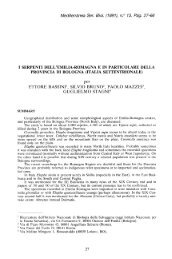ecological effects of marine protected areas empafish project ...
ecological effects of marine protected areas empafish project ...
ecological effects of marine protected areas empafish project ...
You also want an ePaper? Increase the reach of your titles
YUMPU automatically turns print PDFs into web optimized ePapers that Google loves.
EMPAFISH Booklet no. 1 Ecological <strong>effects</strong> <strong>of</strong> Atlanto-Mediterranean MPAs in the EU<br />
locations in the Mediterranean, including the Tuscany Archipelago (Piazzi et al.<br />
2005).<br />
The geographical distribution <strong>of</strong> the tropical alga Acrothamnion preissi was<br />
also reported, including a detailed study carried out around Gorgona Island<br />
(Piazzi et al. 1996).<br />
� Reserve <strong>effects</strong><br />
o Benthic communities<br />
The effectiveness <strong>of</strong> <strong>marine</strong> <strong>protected</strong> <strong>areas</strong> for affecting assemblages <strong>of</strong><br />
algae and invertebrates between 0 and 0.5 m above the mean low water level<br />
<strong>of</strong> rocky coasts <strong>of</strong> the islands <strong>of</strong> Capraia and Giannutri was investigated<br />
through a multifactorial sampling design (Benedetti-Cecchi et al. 2003b).<br />
Differences in structure <strong>of</strong> assemblages, in mean abundance <strong>of</strong> common taxa<br />
and in univariate and multivariate measures <strong>of</strong> spatial variation were<br />
evaluated on three replicate shores for each condition <strong>of</strong> <strong>protected</strong> and<br />
reference <strong>areas</strong> on the west side <strong>of</strong> each island and three un<strong>protected</strong> shores<br />
on the eastern side. Assemblages were sampled independently four times on<br />
each island over a period <strong>of</strong> two years. At each time <strong>of</strong> sampling two sites<br />
were selected randomly at each <strong>of</strong> the two heights on each shore. Most<br />
patterns resulted inconsistent with the predicted effect <strong>of</strong> management<br />
through MPAs. This suggested that designation <strong>of</strong> MPAs in the Tuscany<br />
Archipelago should proceed through management <strong>of</strong> multiple shore and types<br />
<strong>of</strong> habitat, to guarantee protection to a representative sample <strong>of</strong> assemblages<br />
and to the processes responsible for maintenance <strong>of</strong> spatial patchiness at<br />
different scales.<br />
o Fish assemblage<br />
The relative roles <strong>of</strong> human impacts and hydrographical conditions on fish<br />
assemblages <strong>of</strong> shallow (3-10 m depth) rocky reefs were examined by<br />
comparing no-take reserves with fishing <strong>areas</strong> occurring in gradients <strong>of</strong><br />
exposure <strong>of</strong> the coastline to dominant winds and waves around the islands <strong>of</strong><br />
Giannutri and Capraia (Micheli et al. 2005). Fish assemblages were sampled<br />
using underwater visual census techniques. The composition <strong>of</strong> fish<br />
assemblages differed significantly between sites within no-take reserves and<br />
fished reference sites. Four target (Oblada melanura, Diplodus sargus,<br />
Diplodus vulgaris, Spicara flexuosa) and one non-target species (Chromis<br />
chromis) at Giannutri and two target (O. melanura, D. sargus) and two nontarget<br />
species (Thalassoma pavo, C. chromis) at Capraia showed larger<br />
abundance and larger size in no-take reserves than in fished <strong>areas</strong>. These<br />
findings indicated a direct influence <strong>of</strong> protection from fishing on fish<br />
assemblages. It was also hypothesized that fishing could influence<br />
assemblages indirectly by reducing predation on sea urchins, thus intensifying<br />
herbivory and causing “barrens” <strong>of</strong> encrusting coralline algae. Results <strong>of</strong> this<br />
part <strong>of</strong> the study are summarized in the following paragraph.<br />
107


